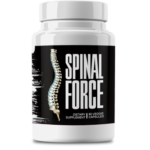This Village-Made Chinese Pain Reliever Eliminates Back And Joint Pain!
Can Chiropractic Care Help Your Facet Joint?

Introduction: Understanding Facet Joint Pain
That nagging back or neck pain you can't shake? Your facet joints might be to blame. These tiny but mighty joints are your spine's unsung heroes—keeping you moving while maintaining stability. When they get irritated or damaged, simple things like bending to tie your shoes or turning to check your blind spot can become painful ordeals. Here's the good news: chiropractic care offers a natural, drug-free way to ease facet joint pain and get you moving freely again. Let's dive into how chiropractic treatment works, what techniques help most, and who stands to benefit from this approach.
What Are Facet Joints and Why Should You Care?
Imagine your facet joints as the carefully engineered hinges between each vertebra. They're what let you twist, bend, and move smoothly while protecting your spinal cord from excessive motion. When they're happy, you don't even notice them. But when they're unhappy? You'll know. Localized pain, stiffness, or even surprising referred pain in your arms, legs, or head can all signal facet joint trouble.
What's Bugging Your Facet Joints?
Several culprits can throw these joints off track:
- Arthritis: The wear-and-tear of osteoarthritis is public enemy #1 for joint cartilage.
- Injuries: From whiplash to slips and falls, trauma can knock these joints out of whack.
- Posture problems: Your mom was right—slouching really is bad for you, especially for these joints.
- Father Time: Like the rest of us, facet joints get stiffer with age.
How Facet Joint Pain Messes With Your Life
This isn't just "oh, my back hurts" discomfort. We're talking about morning stiffness that makes getting out of bed a chore, sharp pains when you lean back, and constant adjustments to find a comfortable position. Ignore it, and you might develop chronic pain or start moving in ways that strain other parts of your body.
Chiropractic Care: Your Natural Pain Relief Option
Chiropractic care specializes in musculoskeletal issues, particularly spine-related problems. Through hands-on techniques and other therapies, chiropractors work to restore proper alignment, calm irritated nerves, and get your body functioning optimally again.
The Chiropractic Approach
Chiropractors operate on a simple but powerful principle: when your spine is properly aligned, your body can heal itself more effectively. They look at the whole picture—not just your pain—often combining adjustments with lifestyle advice for lasting results.
Tools of the Trade
Your chiropractor might use:
- Spinal adjustments: Precise movements to realign joints.
- Gentle mobilization: Think of it as stretching for your spine.
- Specialized tools: For those who prefer a lighter touch.
Getting to the Root of Your Pain
Before any treatment, expect:
- A thorough chat about your health history and symptoms
- Hands-on exams to check your movement and pinpoint tender areas
- Possibly some imaging if there's concern about serious issues
Can Chiropractic Really Help Facet Joint Pain?
Absolutely! Many patients find real relief through chiropractic care. Adjustments can dial down inflammation, relax tight muscles, and restore normal movement.
How Adjustments Help
By carefully realigning your spine, chiropractors take the pressure off those irritated facet joints. This can quiet pain signals, improve circulation, and kickstart healing. For instance, a neck adjustment might bring welcome relief if arthritis has your cervical facets acting up.
What Science Says
Research backs this up. A 2019 study in the Journal of Manual & Manipulative Therapy showed chiropractic care helped people with lumbar facet syndrome move better with less pain.
Is It Safe?
Generally, yes—though like any treatment, it's not for everyone. Some people feel temporary soreness afterward. If you have severe osteoporosis or spinal instability, you'll want to consult other specialists first.
Beyond Adjustments: Other Helpful Therapies
Chiropractors often combine adjustments with other approaches:
Muscle Work
Techniques like myofascial release can relax the muscles supporting your spine, taking stress off those facet joints.
Movement Is Medicine
Targeted exercises strengthen your core and improve flexibility—try cat-cow stretches to keep your lumbar facets happy.
Smart Lifestyle Tweaks
Simple changes like adjusting your workstation or taking standing breaks can make a world of difference.
Why Consider Chiropractic Care?
The benefits go beyond pain relief:
- Move freely again: Bend, twist, and walk without wincing.
- Ditch the pills: A natural alternative to pain medication.
- Prevent future problems: Regular care can slow joint wear.
Is Chiropractic Right for You?
It might be if you have:
- Mild to moderate joint pain (without serious underlying conditions)
- Pain that worsens with movement or poor posture
- A preference for non-surgical solutions
When to Look Elsewhere
If you're not improving after several sessions, or if you notice numbness or weakness, it's time to consult another specialist.
Warning Signs
Skip chiropractic adjustments and seek immediate medical care if you have:
- Severe osteoporosis
- Signs of spinal cord compression (like loss of bladder control)
- Recent spinal surgery
Your Facet Joint Questions, Answered
Can Adjustments Make Pain Worse?
Some temporary soreness can happen, but serious worsening is rare. Always communicate openly with your chiropractor.
How Long Until I Feel Better?
Some people notice improvement in just a few visits; chronic cases might take longer. Your chiropractor can give you a realistic timeline.
Will Insurance Cover This?
Many plans do, but coverage varies. It's worth checking your specific benefits.
Wrapping Up
Chiropractic care offers a natural, conservative approach to facet joint pain that goes beyond masking symptoms. By combining adjustments, supportive therapies, and smart lifestyle changes, it targets the root cause of your discomfort. If back or neck pain is cramping your style, a consultation with a chiropractor might be your first step toward lasting relief.
Remember:
- Facet joint pain often comes from arthritis, injury, or posture issues
- Chiropractic adjustments can reduce inflammation and restore function
- Supportive therapies help maintain results long-term
Ready to take the next step? Find a licensed chiropractor in your area and schedule a consultation today. Your back will thank you!








